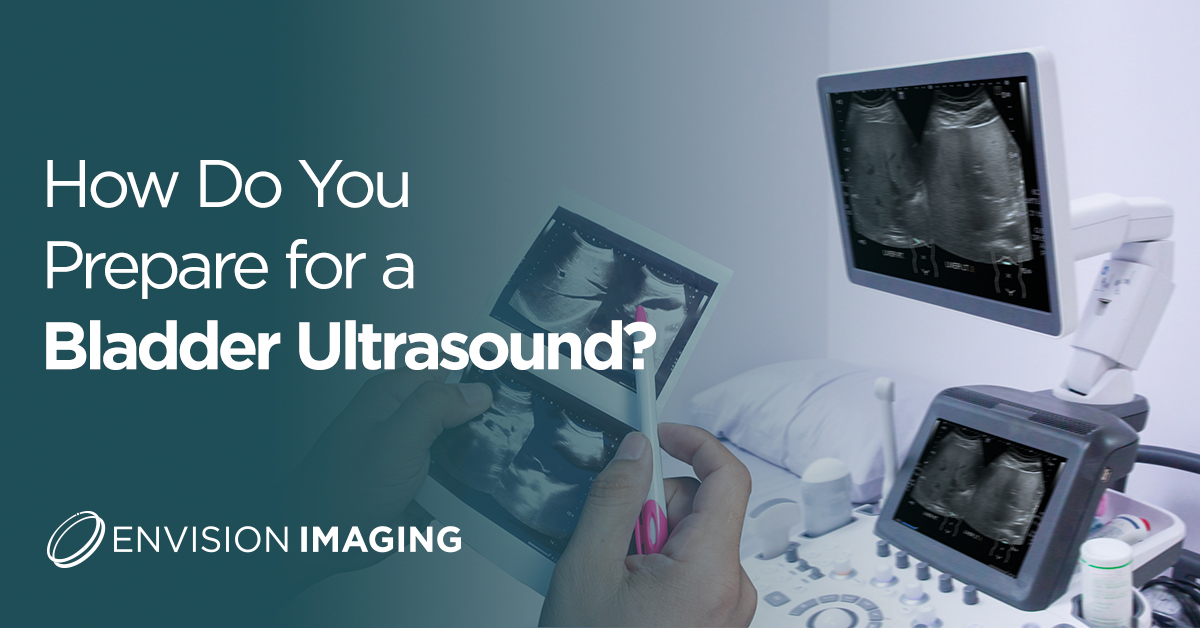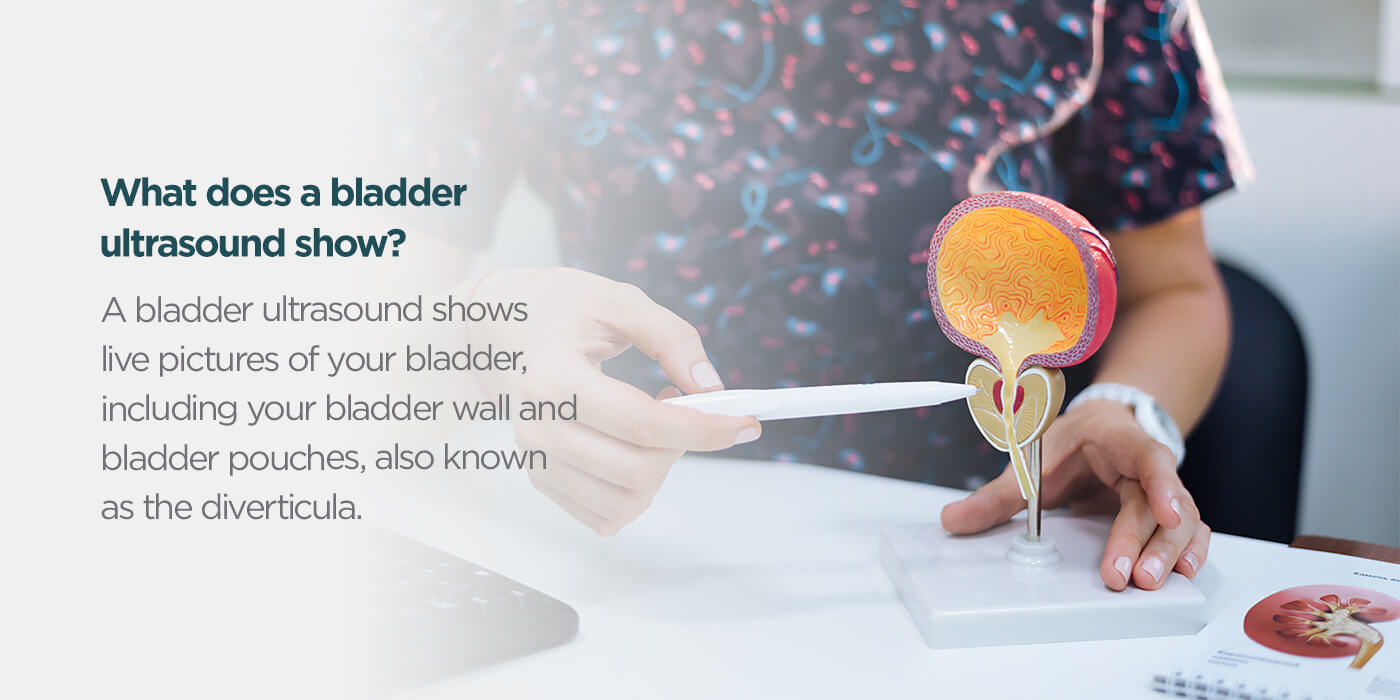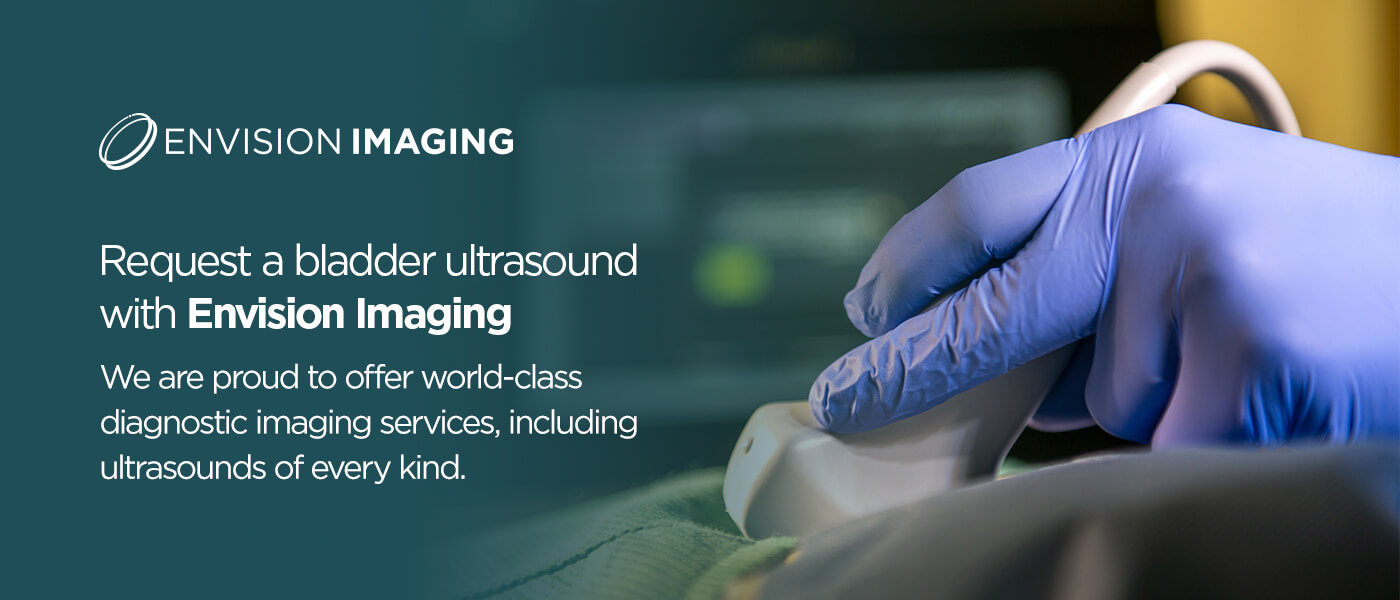How Do You Prepare for a Bladder Ultrasound?

Preparation for an ultrasound is fairly minimal. That said, some ultrasounds, such as bladder ultrasounds, require a full bladder to better visualize the surrounding organs and tissues. In such cases, maintaining a full bladder may cause some temporary discomfort but is important for delivering accurate results.
Keep reading to learn more about bladder ultrasounds and how to prepare for one.

Jump to Sections:
- What does a bladder ultrasound show?
- Do you need a full bladder for an ultrasound?
- How to prepare for a bladder ultrasound
- What happens during a bladder ultrasound?
- When will you get your bladder ultrasound results back?
- Request a bladder ultrasound with Envision Imaging
What does a bladder ultrasound show?
A bladder ultrasound shows live pictures of your bladder, including your bladder wall and bladder pouches, also known as the diverticula. With such pictures, bladder ultrasounds can give doctors valuable information on variables like:
- Abnormalities with bladder size or thickness of bladder walls
- Bladder stones
- Cysts and tumors in the bladder
- Fluid collection
- How much urine the bladder can hold
- Urinary tract infections (UTIs)
Bladder ultrasounds use high-frequency sound waves delivered through a small, wand-shaped probe called a transducer. The transducer transmits the sound waves through the body and records the waves that echo back. The sound waves echo back once they hit a boundary between different tissues.
Such boundaries include those between fluid and soft tissue or soft tissue and bone. After recording the waves, the transducer sends the data to a nearby processing unit and monitor to display live pictures.
Do you need a full bladder for an ultrasound?
Some ultrasound scans require a full bladder, while others do not. The full bladder requirement varies according to where on the body the scan is taking place and what the technologist is looking for. Here are some ultrasound scans that require a full bladder:
- Pregnancy ultrasounds in the first and second trimesters
- Renal ultrasounds, or any ultrasound of the kidney, ureters or bladder
In contrast, an empty bladder is necessary for transvaginal ultrasounds. A full bladder would obstruct the technologist’s view for these ultrasound scans. Ultrasound technologists also ask patients to avoid eating or drinking six hours prior to:
- Abdominal ultrasounds
- Inferior vena cava (IVC) ultrasounds
- Renal artery ultrasounds
Why you shouldn’t empty your bladder when preparing for an ultrasound
There are various reasons why an ultrasound may require a full bladder. In some cases, the ultrasound technologist may need you to have a full bladder so they can measure the bladder volume. Other times, the bladder fluid may provide enhanced visualization of surrounding pelvic organs.
Fluid serves as a visualization aid in ultrasound imaging because sound waves are denser and travel faster in water than in air. You experience these denser, faster sound waves whenever you dunk your head underwater and hear loud, muffled noises. The denser and faster sound waves enable greater detail with the pictures that ultrasound scans produce.
It’s important to maintain a full bladder for ultrasounds with that requirement, as the accuracy of your results could be negatively impacted otherwise.
How to prepare for a bladder ultrasound
A bladder ultrasound requires a full bladder. With that in mind, here are some steps to take in preparation for your bladder ultrasound:
- Empty your bladder one to two hours before the ultrasound.
- Drink one liter or 32 ounces of water 30 minutes before your ultrasound appointment. Don’t empty your bladder again until the appointment ends.
- Wear comfortable clothing and take any prescribed medication as directed.
- Arrive at the ultrasound clinic 15 minutes before your appointment.
You can also eat as you usually would on the day of your ultrasound appointment. For individuals with a bladder catheter, you can clamp the catheter one to two hours before the appointment.
What happens during a bladder ultrasound?
Once you arrive at the center, check in, and are provided a room, you may be asked to change into medical scrubs or a hospital gown. You will also need to remove any jewelry located in the area being scanned, such as a belly button piercing.
When you’ve changed and are ready, the ultrasound technologist will ask you to lie back on the medical table and arrange your clothing to expose the area that will be scanned. The technologist will then apply a warm, non-scented, hypoallergenic gel to the skin in the scanned area. The gel serves as a lubricating medium for the transducer to transmit sound waves through your skin.
After applying the gel, the sonographer will move the transducer in a circular motion around your hip bones and below your belly button, taking pictures of your bladder. You may feel mild to moderate pressure as they do so, but you should not feel any pain. The sonographer will ask you to perform various breathing techniques that enhance image quality and potentially change positions to improve their visualization of the organs and tissues in and around your bladder.
Midway through your ultrasound appointment, the sonographer will ask you to use the restroom to empty your bladder. Once you return, the sonographer will use the transducer to acquire more images of your bladder, measuring the post-void residual (PVR) urine. If a urine test is also part of the appointment, it will happen after the ultrasound scan is completed.
After the sonographer acquires all of the images of your bladder they need, they will send the images to the radiologist for review. You will be free to leave at this point. From the time you arrive at the clinic to the moment you leave, you can expect the appointment to last between 30 minutes to one hour.
When will you get your bladder ultrasound results back?
After an ultrasound scan, the radiologist will review your results and send them to your doctor extremely quickly. Before you leave the center after your appointment, you can set up a follow-up appointment with the radiologist during which they will discuss your results with you.
The follow-up appointment can occur once 48 hours have passed after the scan. Envision Imaging has some of the fastest turnaround rates in the industry, allowing your doctor to receive your results and prescribe treatment for any urgent medical concerns as quickly as possible.

Request a bladder ultrasound with Envision Imaging
If you require a bladder ultrasound, Envision Imaging is here to help. We are proud to offer world-class diagnostic imaging services, including ultrasounds of every kind. Our Envision Radiology headquarters are located in Colorado Springs, Colorado, but we have Envision Imaging locations in Texas, Louisiana, Oklahoma, Utah, and other centers elsewhere in Colorado.
At each of our imaging centers, we aim to provide an unparalleled quality of service by keeping our patients the focus of all we do. We welcome you to request an appointment at an Envision Imaging center near you.


